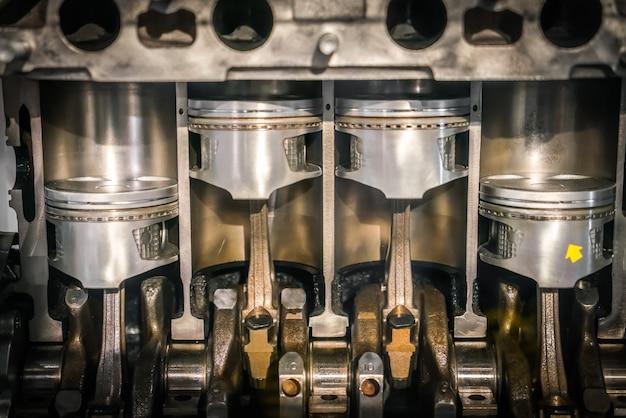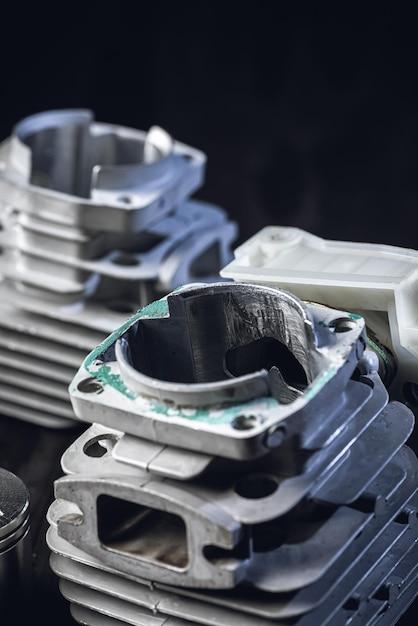Are you experiencing problems with your car’s piston rings? Wondering how long you can keep driving before needing a repair? We’ve got you covered! In this comprehensive blog post, we will answer all your burning questions about driving with bad piston rings.
From the signs of bad piston rings to the potential consequences of driving with them, we will provide you with valuable insights. We’ll also discuss whether you can temporarily fix worn piston rings, the cost and process of replacing piston rings, and if it’s even worth it.
So, buckle up and get ready to learn everything you need to know about driving with bad piston rings. Don’t let this issue ruin your ride – let’s dive in and find out how to handle it!
How Long Can You Keep Driving When Your Piston Rings Are on Their Last Legs
Signs Your Piston Rings Are Past Their Prime
Before we delve into the burning question of how long you can drive with bad piston rings, let’s first discuss the telltale signs that your piston rings are on their last legs. Remember, prevention is better than a stranded car on the side of the road.
1. Smokin’ Exhaust
If your car’s exhaust is puffing out smoke like a chimney on a cold winter’s day, there’s a good chance your piston rings are worn out. This smoke show can come in one of two flavors: a blueish hue or a more foreboding white cloud. Either way, it’s time to give your car some much-needed TLC.
2. Oil Consumption Blues
Have you noticed that your car has been guzzling down oil like it’s going out of fashion? Those thirsty piston rings may be the culprits. When the rings lose their ability to seal the combustion chamber, oil can slip past, resulting in higher oil consumption. So, keep an eye on that dipstick!
3. Power Struggles
Feeling a loss of power and performance under the hood? It could be due to weakened piston rings. As these rings wear down, they fail to maintain proper compression in the cylinders. And let’s face it, nobody loves feeling underpowered.
The Waiting Game: How Long Can You Drive
Now, let’s tackle the big question: just how long can you keep cruising with bad piston rings? Well, the answer isn’t exactly straightforward, as it depends on a host of factors. Here’s a breakdown of what you can expect:
1. Rollin’ with Blue Smoke
If your exhaust smoke has taken on a bluish tint, it typically indicates burning oil. You might be able to squeeze out a few hundred miles of driving, but don’t count on it for the long haul. It’s best to set aside some quality time with your mechanic sooner rather than later.
2. Going Full-on White
When your exhaust spews white smoke, it’s a sign of coolant making its way into the combustion chamber. This could spell bigger trouble for your engine, as overheating may be just around the corner. It’s time to gracefully bow out of the driving game and seek professional assistance promptly.
3. Power Down
If you’re experiencing a noticeable decrease in power and performance, it’s a clear indication that your piston rings are struggling to do their job. Driving in this condition for an extended period could lead to more significant engine damage. It’s wiser to park your ride and give it the care it deserves.
The Bottom Line
While it may be tempting to push the limits and see how far you can go with bad piston rings, it’s a risky gamble that could leave you stranded at the most inconvenient time. The best course of action is to address the issue promptly to prevent further damage to your beloved vehicle. So, when faced with smoke signals, increased oil consumption, or power struggles, it’s time to bid adieu to the open road and schedule a trip to the mechanic. Your car will thank you for it!
FAQ: How Long Can I Drive With Bad Piston Rings
How do you temporarily fix worn piston rings?
Worn piston rings can cause issues with your engine’s performance, but there are a few temporary fixes you can try. One option is to use an oil additive that is specifically designed to reduce oil consumption and improve the sealing of the rings. These additives can help minimize the effects of worn rings and provide some temporary relief. Keep in mind, however, that these temporary fixes are just that – temporary. It’s important to get your piston rings properly repaired or replaced as soon as possible.
Will a car still run with a broken piston?
If you have a broken piston, it’s unlikely that your car will run smoothly, if at all. A broken piston can cause serious damage to your engine and lead to a loss of power, misfires, and potentially even engine failure. Driving with a broken piston is not recommended and can cause further harm to your vehicle. It’s best to have the issue diagnosed and repaired by a qualified mechanic as soon as possible.
Can you drive with a blown cylinder?
Driving with a blown cylinder can be risky and may cause further damage to your engine. A blown cylinder typically occurs when there is a breach in the cylinder wall, which can lead to compression loss and a decrease in engine power. It’s possible that you may still be able to drive short distances with a blown cylinder, but it’s best to have it repaired as soon as possible to prevent any additional damage or safety hazards.
How much does it cost to fix worn piston rings?
The cost of fixing worn piston rings can vary depending on several factors, including the make and model of your vehicle, the extent of the damage, and the labor rates in your area. On average, you can expect to pay anywhere from $500 to $2000 for a piston ring replacement. It’s important to get a professional diagnosis and estimate from a trusted mechanic to determine the exact cost for your specific situation.
What are the signs of bad piston rings?
Bad piston rings can cause a variety of symptoms in your vehicle. Look out for excessive oil consumption, blue smoke coming from the exhaust, a loss of power or acceleration, and low compression in one or more cylinders. Additionally, you might notice increased engine noise or a rough idle. If you’re experiencing any of these signs, it’s worth having your piston rings inspected by a professional.
What happens if you drive with bad piston rings?
Driving with bad piston rings can lead to a number of issues. The primary concern is increased oil consumption, as the faulty rings can allow oil to enter the combustion chamber and get burned along with the fuel. This can result in reduced engine performance, poor fuel economy, and increased emissions. Over time, the lack of proper compression can cause further damage to the engine, leading to more extensive and expensive repairs.
How long will an engine last with bad piston rings?
The lifespan of an engine with bad piston rings can vary depending on several factors, including driving conditions, maintenance, and how severe the ring wear is. In some cases, an engine with worn rings can continue running for tens of thousands of miles, albeit with reduced performance and efficiency. However, it’s important to note that driving with bad piston rings can lead to additional damage and eventually engine failure. It’s best to address the issue promptly to avoid further complications.
Will thicker oil help worn piston rings?
Using thicker oil as a temporary solution for worn piston rings is a common misconception. While thicker oil may provide temporary relief by reducing oil consumption, it is not a long-term fix. Thicker oil can hinder proper lubrication, potentially causing damage to other engine components over time. It’s important to address the root cause of the problem and have your piston rings repaired or replaced by a professional mechanic.
Can you replace piston rings without removing the engine?
Replacing piston rings without removing the engine is possible in some cases, but it can be a complex and labor-intensive process. It typically involves removing the cylinder head or the engine block and requires specialized tools and expertise. While it may be possible to replace the rings without fully removing the engine, it’s generally recommended to consult with a qualified mechanic who can assess the best approach for your specific situation.
Can you replace just piston rings?
Yes, it is possible to replace just the piston rings without replacing the entire engine. However, it’s important to note that this is a major repair and should be done by a skilled professional. The process involves removing the pistons, removing the old rings, and installing new rings. It’s often recommended to also inspect and potentially replace other related components, such as the cylinder walls and connecting rod bearings, while the engine is disassembled.
Can you drive a car with worn piston rings?
While you may be able to drive a car with worn piston rings for a period of time, it’s not recommended. Worn piston rings can lead to decreased engine performance, increased oil consumption, and potential damage to other engine components. It’s best to have the issue addressed as soon as possible to prevent further complications and ensure the longevity of your vehicle.
Is it worth replacing piston rings?
Replacing piston rings can be a significant investment, and whether it’s worth it depends on the overall condition of your vehicle and your long-term plans. If your car is relatively new or has other major issues, it may be more cost-effective to consider other options, such as purchasing a new vehicle. However, if your vehicle is in good overall condition and you plan on keeping it for an extended period, replacing the piston rings can restore engine performance and prolong its lifespan.
What causes piston rings to fail?
Piston rings can fail due to a variety of factors. Some common causes include long-term wear and tear, inadequate lubrication, high engine operating temperatures, poor maintenance, or the presence of contaminants in the engine oil. Over time, these factors can lead to ring wear or damage, affecting their ability to seal properly and maintain good compression.
How much piston damage is okay?
Any amount of piston damage should be taken seriously, as it can negatively impact engine performance and reliability. Even minor damage, such as scuffing or scratching, can lead to issues with piston ring sealing and compression. It’s important to have any visible piston damage inspected by a professional mechanic to determine the best course of action for repair or replacement.
How long will a bad piston last?
The lifespan of a bad piston can vary depending on the severity of the issue and how the vehicle is driven. In some cases, a vehicle with a bad piston may continue to run for a limited distance, but the engine performance will be significantly compromised. Continuing to drive with a bad piston can cause further damage and lead to engine failure. It’s best to address the issue promptly to prevent additional complications.
Can you drive a car with a broken piston?
Driving a car with a broken piston is not advisable. A broken piston can cause severe engine damage, loss of power, and potential safety hazards. Continuing to drive with a broken piston can lead to further complications, including complete engine failure. It’s crucial to have the issue diagnosed and repaired by a qualified mechanic as soon as possible to avoid additional damage and costly repairs.
That concludes our FAQ-style section on driving with bad piston rings. Remember, if you’re experiencing any issues with your piston rings or engine, it’s best to consult with a professional mechanic to assess the situation and determine the best course of action for repairs.

